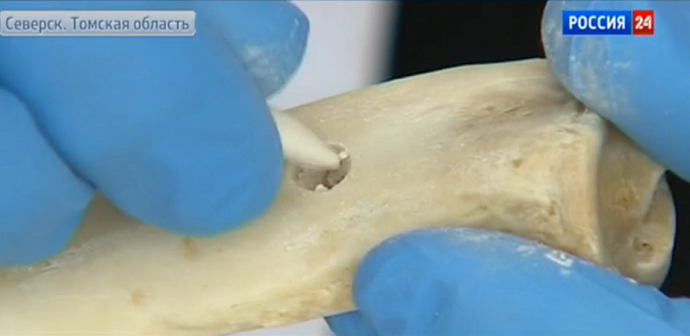Russian scientists have created a new biological material they called “bone cement”, which after 3D printing into a fracture or a crack, completely dissolves over time, while in its place the human body regenerates the missing part of the bone tissue.
According to RT, the new substance based on biological hydroxyapatite was created by scientists of the Russian National Research Nuclear University’s affiliate in the Siberian city of Seversk, Tomsk region.
“We have created material that the organism takes as original,” professor Vitaly Guzeev said in the statement. The material is soft and flexible but hardens after application. The material is not rejected by the body and has huge broad potential in surgery, ranging from dentistry and cosmetology.
“On the basis of hydroxyapatite, we prepared a liquid material that we can fill a 3D-printer with,” professor has explained. Scientists hope to use tomography images and 3D printer to recreate, fit and match the missing bone part using minute specification.
The new material, which authors themselves call “bone cement” was conceived almost by accident.
Initially, scientists were working on the composition, which when applied to titanium prostheses would accelerate recovery. Then they thought why not make this material as strong as titanium, but without iron impurities.
“The bone marrow contains mesenchymal cells that always migrate to the damaged tissue areas. They detect our matter as something that can take part in biochemical processes and start processing it to enable [cell] division. Regeneration is cell division itself. As a result, a new bone tissue is produced with its own blood vessels and nerve cells,” Guzeev explained.
All components of the material are of natural origin, as the substance is derived from animal bones. This enables the body to adopt to it and accelerate the healing process.
Applying the “cement” results in the regeneration of real bone tissue with blood vessels and even nerve fibers. Unlike with titanium, which is often used in surgery to hold bones together, removing the material from the body after the regeneration is complete, is no longer necessary.
After animal studies demonstrated that the “bone cement” could actually help heal fractures and cracks, scientists started preparing documents for clinical trials, after which they hope to set up production in St. Petersburg.
M. Wassouf

